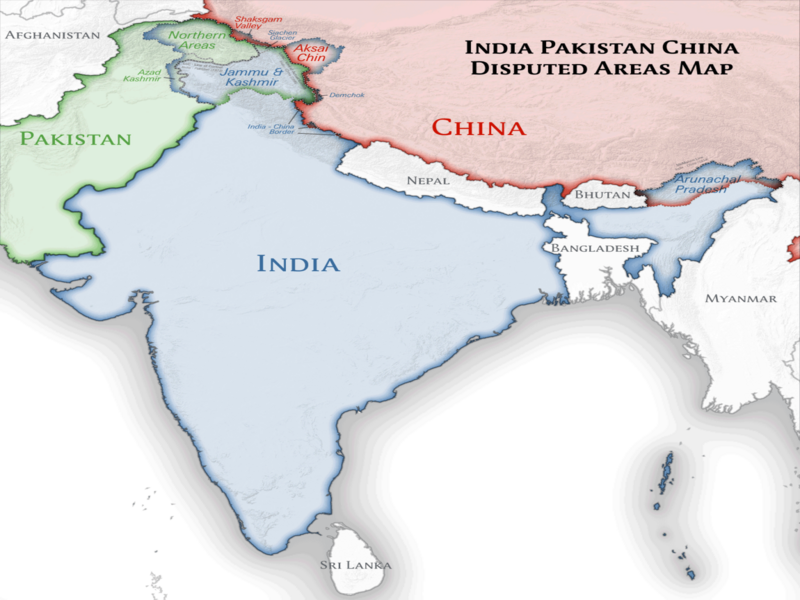The April 22 terrorist attack in Pahalgam, a part of Indian-administered Kashmir, which killed 26 Hindu tourists, plunged South Asia into its most dangerous crisis in decades. India attributed the attack to Pakistan-based militants affiliated with Lashkar-e-Taiba and responded with “Operation Sindoor,” a series of missile strikes on alleged terrorist camps in Pakistan-administered Kashmir and beyond. Pakistan has retaliated with drone and artillery fire across the Line of Control and into Indian Punjab, with both sides reporting high civilian casualties amid heavy exchanges. While the two sides managed to reach a ceasefire on May 12 that has largely held over subsequent weeks, the underlying causes of the recent escalation remain unresolved, with future rounds of violence likely.
Ever since the partition of British India in 1947, the former princely state of Jammu and Kashmir has been bitterly disputed between India and Pakistan. While both states claim the entirety of the territory, India has controlled around two-thirds of the region’s land area and population ever since the region was split by the first Indo-Pakistani war of 1947-48. The remainder remains administered by Pakistan and its closest ally, China. Since then, the region has been the subject of numerous conflicts fought between Pakistan and India. As the military balance of power has shifted decisively towards India in recent decades, Pakistan has shifted from efforts to seize the region through invasion to the sponsorship of armed terrorist organizations in their efforts to dislodge India.
While immediate concerns around escalation and civilian protection remain urgent, Western policy-makers must consider the long-term strategic stakes involved. India is not only the world’s largest democracy but also the most capable regional actor able to balance against Chinese expansionism. Its population scale, growing military capacity, and pivotal geostrategic position make it a natural partner for ensuring Indo-Pacific stability.
China disputes large swaths of its 3,488 km border with India. In Jammu and Kashmir itself, the unpopulated but strategically valuable heights of Aksai-Chin, while claimed by India, have been controlled by China since the 1950s. Further east, the considerably more populated Indian state of Arunachal Pradesh, home to more than a million Indian citizens, remains claimed by China despite having been governed as part of India since its independence in 1947. In addition to these disputes with India itself, China also disputes large swaths of territory with Bhutan, a strategically located buffer state situated between India and China. These territorial disputes with India’s two largest neighbours have long driven Delhi’s geostrategic and security calculus.
While India and China have not fought each other in a full-scale war since the 1962 Sino-Indian war, tensions between India and China have escalated considerably in the past several years. In May 2020 conflict over the line of control separating Chinese and Indian administered Kashmir escalated, leaving dozens of border patrols killed and injured on both sides. Additionally, by seizing internationally recognized Bhutanese territory through its construction of roads, settlements and other infrastructure, China has increasingly threatened India’s control over the Siliguri corridor, a vital but narrow stretch of land linking the bulk of Indian territory to its Northeastern states.
In response to these threats to its territorial integrity, India’s geostrategic posture has undergone a significant realignment. Under its “Act East” policy, India has also taken a more assertive stance in countering Chinese influence across the South China Sea and Indian Ocean, leveraging infrastructure and trade initiatives to build coalitions among smaller regional states wary of Beijing’s assertiveness. At the same time, Delhi has actively sought to strengthen security cooperation with western powers in the hopes of deterring Beijing, most notably through its membership in the Quadrilateral Security Dialogue (The Quad) alongside the United States, Japan, and Australia. These moves have come as India’s economy has surged, enabling substantial military modernization aimed at not only deterring threats to its own territory but also projecting power across the Indian ocean as a net security provider.
At the same time, considerable challenges remain to strengthening India’s relationship with the west. Recent allegations of Indian involvement in the assassination of Sikh activists in Canada and interference in Canadian elections have raised legitimate concerns that have strained relationships with India. However troubling, these concerns must be weighed and managed within the broader strategic imperative of engaging India as the only Indo-Pacific power capable of balancing China’s growing influence. As the most populous nation on Earth with more than 1.4 billion people and the world’s fastest growing major economy, India is simply too big to seek to ignore.
While concerns persist about India’s internal democratic backsliding, especially under the BJP, it is important to maintain perspective. India retains robust electoral competition and an independent judiciary. The outcome of the 2024 general election, which forced the BJP into coalition governance, highlighted the Indian electorate’s continued pluralism. Attempting to marginalize India through “naming and shaming” would only inflame illiberal backlash and would not meaningfully contribute to strengthening the country’s democratic institutions.
In contrast, despite decades of Western arms sales, economic aid and a total of 24 International Monetary Fund bailouts, efforts to reform Pakistan’s authoritarian trajectory have largely failed while its strategic dependence on China has only deepened. Although definitive proof linking Pakistan to the recent Pahalgam attack is absent, the country’s record, ranging from past support of groups like Lashkar-e-Taiba to the presence of Osama bin Laden near a military garrison, casts a long shadow over its credibility.
Respecting India’s core interest in preserving its territorial integrity is foundational to any durable partnership. Delhi cannot permit a precedent in which secessionist violence succeeds through sustained insurgency and external sponsorship. Such an outcome is likely to embolden other separatist movements and risk unraveling fragile stability across South Asia. International law reinforces this principle: sovereignty and territorial integrity are pillars of the rules-based international order. While foreign observers may rightly advocate for restraint, the protection of civilians, and respect for human rights, they should harbour no illusions about altering India’s fundamental position that Jammu and Kashmir is an inseparable part of India like any other.
Failing to engage India meaningfully risks ceding strategic space to authoritarian powers like China and undermining the global coalition that is needed to effectively defend a rules-based international order. As the world’s most populous democracy and a rising economic and military power, India must be seen not only as a regional player, but as a global partner in defending territorial integrity and deterring aggression from authoritarian powers.
Photo: Composite map showing the borders of India, Pakistan & China as per official sources overlaid on areas of actual administrative control (2011), by Arun Ganesh via Wikimedia Commons. Licensed by CC BY-SA 3.0.
Disclaimer: Any views or opinions expressed in articles are solely those of the authors and do not necessarily represent the views of the NATO Association of Canada.





